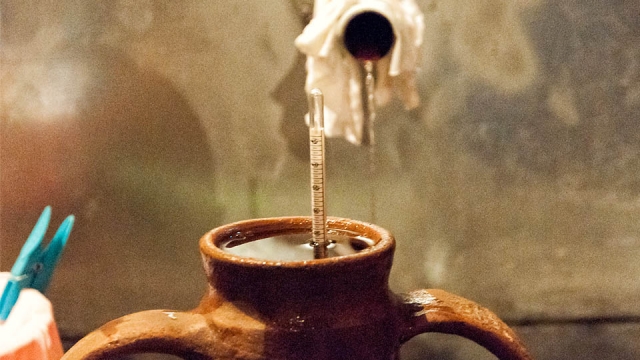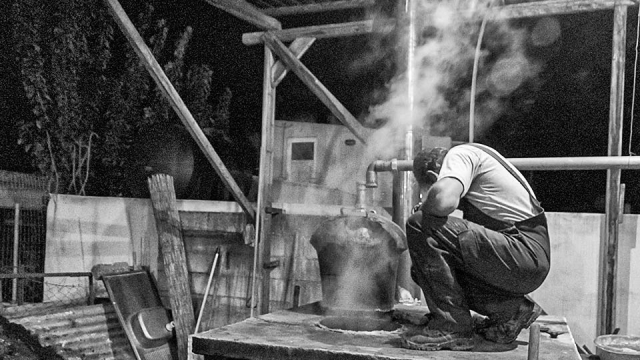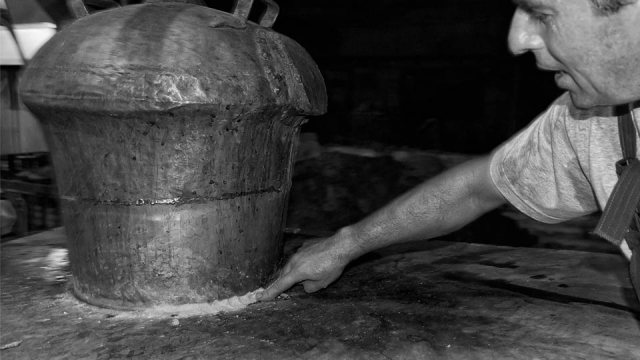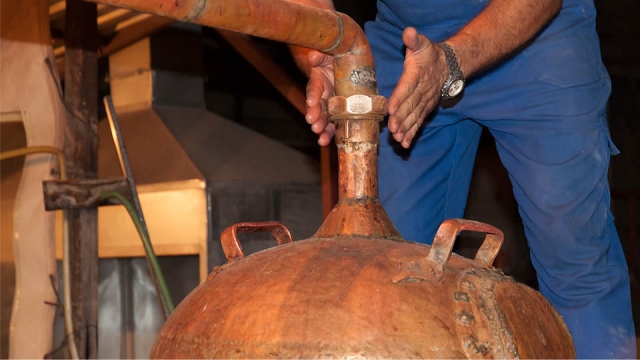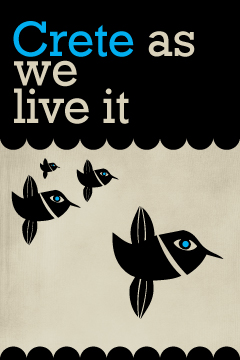If you find yourself in the Cretan countryside from about the end of October to mid-December, you will spot ‘suspicious’ smokes coming out from ‘unsuspected’ places. This is a sign from the god of alcohol telling you that ‘raki making takes place on that spot’. Follow the signs and enter the distillery, even if you are not invited. The chances are you will soon join the party and enjoy good food, making new friends and -of course- large amounts of raki (aka tsikoudia)! If you come early enough and have a strong liver, you can try the first raki that comes out (known as protoraki), which is the strongest with the highest alcohol proof.
Rakokazano is not a typical process to make raki. It is actually a ritual deeply rooted in Cretan culture. The entire process becomes a celebration in which friends and relatives take part by bringing food and desserts and sampling the drink as it is being made. Distilleries are usually small family-run factories, combining the technological facilities of raki making and the ones of a tavern (tables, kitchen, ect) in one space. The ‘host’ is the family whose raki is being made, who is also the main responsible for the well-being of the guests while the distillery owners take care of the ‘technical’ part of the process and everybody waits for the ‘water that burns’ to appear.
If you are lucky, you might experience an ‘after’ raki party, with DJs and drunken guests dancing in the mud in the middle of the fields and barrels vibrating in the rhythm
As people gradually get in the mood and the atmosphere fills with the smell of alcohol, a mandolin or lyra appears and declares the musical opening of the feast.
Although most distilleries are simple and family run, others are more fancy and modern. In any case, the ‘ritual’ is the same and a good time is guaranteed. If you are lucky, you might experience an ‘after’ raki party, with DJs, electronic music and drunken guests dancing in the mud in the middle of the fields while barrels vibrate in the rhythm. We recently experienced it, and it was the most surreal party we ever attended ;-)

